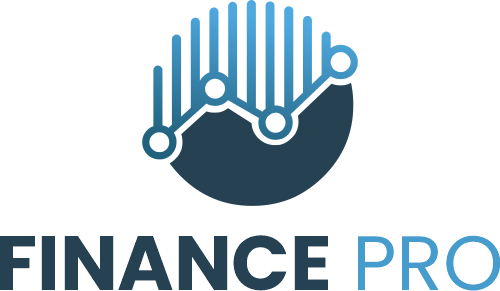“I’m a musician. The risk I take is in my chosen career path. I don’t want to take risk in my investments.” This was the most common remark we heard from entertainer clients for years.
And the most common advice those musicians would receive to address their concerns was, “Invest in municipal bonds. Your principal is protected, default risk is low, and you get tax-free income.” For the most part, that was true… until interest rates stayed close to 0% from 2020-2022 and then rose at their fastest pace in US history since then. During that time, municipal bonds were not what they were promised to be — down almost 10% in 2022 — especially for those who thought they couldn’t lose money owning them.
To be fair, barring defaults, and even with the recent price declines, municipal bonds bought prior to the rise in interest rates will give investors the return they signed up for when they bought them. But now we have artists coming to us excited that they are getting paid 5% pre-tax on cash in money market funds. However, those heady money market rates can be cut in half by taxes and they won’t last forever — we suspect they won’t even last much longer from here.
So, what can you do for an attractive risk-adjusted return these days while avoiding the volatility of the stock market? Let’s look at some particularly interesting options.
Intermediate Duration Municipal Bonds
While past performance doesn’t always translate into the future, over rolling two-year periods, high-quality intermediate municipal bonds (based on calendar year performance of the Bloomberg Municipal Bond Index from 12/31/1980 through 12/31/2022) have never lost money. Now, with interest rates at their highest levels in almost 20 years and municipalities’ finances healthy, these bonds look more attractive than they have in a long time.
However, balancing exposure to different sources of return in fixed income is important. We do not recommend just buying Treasuries or Treasury/municipality ladders. Consider an actively managed bond portfolio (as opposed to laddering) with the flexibility to move between municipal bonds and taxable bonds based on their relative attractiveness. This allows you to maximize after-tax returns while also managing interest rate exposure.
Hedged Exposure to Stocks
The S&P 500 is up over 18% year-to-date (as of Dec. 4), but it’s done so in a fairly volatile manner and more than half of the stocks in it are actually down for the year.
For investors concerned about volatility, they can consider reducing exposure to the market in the near-to-medium term by using a defined outcome exchange-traded fund (DOETF). Like other ETFs, these types of securities have daily liquidity and relatively low cost. But what makes DOETFs different from the index ETFs that many investors are familiar with is that they utilize options to create a specially designed payoff. For example, let’s assume an investor purchased a DOETF that allowed the investor to capture around 15% of any upside in stocks while not experiencing the first 15% of any market decline.
In the same example, if the market is up 20% over the next year, the investor would be up around 15%. If the market rises 8%, investors’ returns will be the same. If the market is down 10%, the investors won’t have any gains but also won’t take any loss. And if the market has an awful year and ends down 20%, investors would only be down 5%.
Private Credit
Every week brings new headlines about banks cutting back lending in different areas. It raises the question, “Who is lending money to businesses these days?” Private debt funds.
This area has grown substantially since the financial crisis as government regulations have made it harder and costlier for banks to lend. The private markets have stepped into that void. One notable aspect of these loans is that they’re made at floating rates, with financing usually made similarly. That’s protected them from the run-up in interest rates, as fixed interest investments have declined in value. That’s also allowed them to keep up better with inflation. Investors contemplating private credit should consider the fact that some of these strategies are only available to accredited investors or qualified purchasers and they’re often illiquid, with money locked up for several years at a time.
Real Estate
In addition to private credit, we’re seeing attractive opportunities to lend into the commercial real estate (CRE) market, partly for the same reasons as private credit (with banks stepping back) and partly for real estate-specific reasons, such as the pressure on office prices since the pandemic. However, with office being only one small piece of the overall market and with lenders having attractive bargaining power as assets are revalued and refinanced, that’s an area we’ve been highlighting in 2023.
Finally, and further up the risk spectrum, is real estate equity. Even inside that asset class, the risks can vary. With the turbulence in the market, we’re starting to see more attractive opportunities emerge in the “core plus” space, which are typically well-leased, income-producing properties in good locations. They’re often found in commuter suburbs in secondary or tertiary markets.
Like private credit, these real estate strategies are often illiquid, and even some of the strategies which are advertised as more liquid have gated investor redemptions recently. But for investors with enough cash flowing in to meet their outflows (even in a distressed situation) and a longer time horizon, the rewards for accepting that illiquidity can be meaningful.
What to Do
As always, investors should consult with a licensed investment advisor before making investment decisions. While each of the asset classes discussed here may be of interest, they are not suitable for all investors. At the same time, we recognize that having excess cash earning 5% in money market funds may feel nice for now, but it may not feel so nice looking back on things in a year’s time. Investors don’t need to feel tied to cash or forced to swing for the fences — there are many options worth considering in the middle ground.
Finally, while we’ve mostly focused on safer options here, which are meant to guard against the risk of market volatility, there’s another risk that investors must weigh — the risk of running out of money during retirement. Taking too little volatility risk can potentially generate excessive depletion risk. We recommend discussing this, and other considerations, with your financial advisor.
Adam Sansiveri is a senior managing director in Nashville, Stacie Jacobsen is a senior national director, and Chris Brigham is a senior research analyst at Bernstein Private Wealth Management a business unit of AllianceBernstein. Sansiveri and Jacobsen are also coheads of Bernstein’s Sports and Entertainment Group. AllianceBernstein is a leading global research and investment management firm headquartered in Nashville with $652 billion under management (as of Oct 31, 2023) and offices in 53 cities in 26 countries.
Disclosure: This material has been distributed for informational purposes only and should not be considered as investment advice or a recommendation of any particular security, strategy or investment product. Information contained herein has been obtained from sources believed to be reliable, but not guaranteed. Bernstein does not provide tax, legal, or accounting advice. In considering this material, you should discuss your individual circumstances with professionals in those areas before making any decisions.

